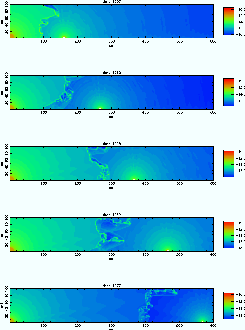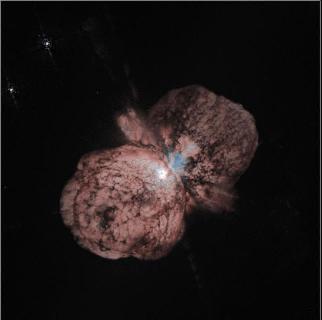Massive Stars
|
Work on massive stars at Birmingham centers on understanding the basic dynamics of radiatively driven winds in early-type binaries, by using either detailed hydrodynamic simulations of colliding winds or by observations at X-ray energies. Work is underway on several individual systems, including Eta Carinae (probably the most massive stellar system in our galaxy), and Iota Orionis.
A numerical simulation of colliding stellar winds in an early-type binary. In such binary systems two massive early stars (either O or Wolf-Rayet stars) both have strong, highly supersonic stellar winds. These winds collide, and because the wind velocities are so high (several thousand km/s) the collision results in the emission of copious amounts of X-rays.
An HST image of Eta Carinae. This enigmatic system is now believed to be a binary colliding wind system. It has been observed to be a strong and variable source of X-rays. This HST image shows the nebula surrounding Eta Carinae, believed to have been formed by a huge stellar outburst in the nineteenth century. |



